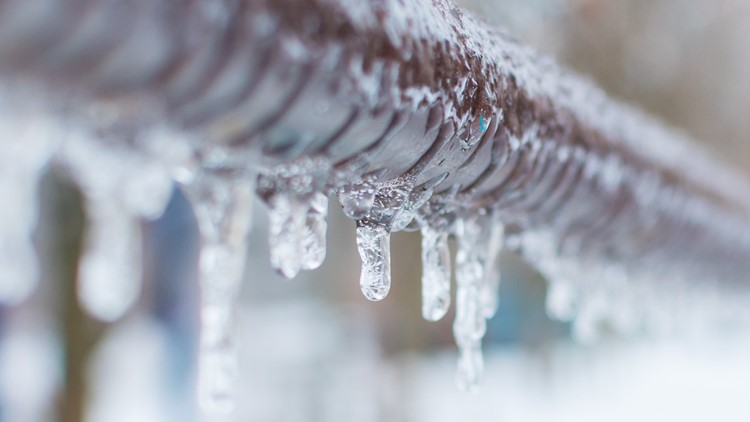The article down the page relating to Winter Plumbing Precautions: Preventing Frozen Pipes is pretty much intriguing. Don't miss it.
.jpg)
Cold weather can damage your plumbing, especially by freezing pipelines. Here's exactly how to stop it from happening and what to do if it does.
Introduction
As temperature levels decline, the risk of frozen pipes increases, potentially resulting in costly repairs and water damages. Comprehending how to prevent icy pipes is critical for homeowners in cool climates.
Comprehending Frozen Pipes
What causes pipes to freeze?
Pipes ice up when subjected to temperature levels listed below 32 ° F (0 ° C) for expanded periods. As water inside the pipes ices up, it broadens, putting pressure on the pipeline wall surfaces and potentially creating them to burst.
Threats and problems
Icy pipelines can bring about supply of water disruptions, residential or commercial property damages, and pricey repair work. Ruptured pipes can flood homes and create considerable structural damages.
Indications of Frozen Water Lines
Determining frozen pipelines early can avoid them from bursting.
Just how to identify frozen pipes
Try to find reduced water flow from taps, uncommon smells or sounds from pipelines, and noticeable frost on exposed pipelines.
Avoidance Tips
Insulating prone pipelines
Wrap pipes in insulation sleeves or make use of warmth tape to safeguard them from freezing temperatures. Concentrate on pipelines in unheated or outside areas of the home.
Home heating techniques
Maintain indoor rooms sufficiently heated, specifically locations with pipes. Open up closet doors to enable cozy air to distribute around pipelines under sinks.
Safeguarding Outside Pipes
Garden hose pipes and outside faucets
Separate and drain pipes yard hoses before winter months. Mount frost-proof faucets or cover outside faucets with insulated caps.
What to Do If Your Pipes Freeze
Immediate activities to take
If you suspect frozen pipelines, keep taps open up to relieve pressure as the ice thaws. Utilize a hairdryer or towels soaked in hot water to thaw pipes slowly.
Long-Term Solutions
Structural changes
Take into consideration rerouting pipes far from exterior walls or unheated locations. Include added insulation to attic rooms, basements, and crawl spaces.
Updating insulation
Purchase high-grade insulation for pipelines, attic rooms, and walls. Appropriate insulation helps maintain constant temperatures and decreases the threat of frozen pipes.
Conclusion
Preventing frozen pipes calls for aggressive steps and fast responses. By comprehending the reasons, indications, and preventive measures, home owners can secure their pipes during winter.
5 Ways to Prevent Frozen Pipes
Drain Outdoor Faucets and Disconnect Hoses
First, close the shut-off valve that controls the flow of water in the pipe to your outdoor faucet. Then, head outside to disconnect and drain your hose and open the outdoor faucet to allow the water to completely drain out of the line. Turn off the faucet when done. Finally, head back to the shut-off valve and drain the remaining water inside the pipe into a bucket or container. Additionally, if you have a home irrigation system, you should consider hiring an expert to clear the system of water each year.
Insulate Pipes
One of the best and most cost-effective methods for preventing frozen water pipes is to wrap your pipes with insulation. This is especially important for areas in your home that aren’t exposed to heat, such as an attic. We suggest using foam sleeves, which can typically be found at your local hardware store.
Keep Heat Running at 65
Your pipes are located inside your walls, and the temperature there is much colder than the rest of the house. To prevent your pipes from freezing, The Insurance Information Institute suggests that you keep your home heated to at least 65 degrees, even when traveling. You may want to invest in smart devices that can keep an eye on the temperature in your home while you’re away.
Leave Water Dripping
Moving water — even a small trickle — can prevent ice from forming inside your pipes. When freezing temps are imminent, start a drip of water from all faucets that serve exposed pipes. Leaving a few faucets running will also help relieve pressure inside the pipes and help prevent a rupture if the water inside freezes.
Open Cupboard Doors
Warm your kitchen and bathroom pipes by opening cupboards and vanities. You should also leave your interior doors ajar to help warm air circulate evenly throughout your home.

Do you appreciate reading up on How To Avoid Freezing Pipes? Create feedback directly below. We would be pleased to hear your responses about this entry. Hoping that you visit us again before long. Are you aware of somebody who is in to the topic? Feel free to share it. We enjoy your readership.
Visit Site